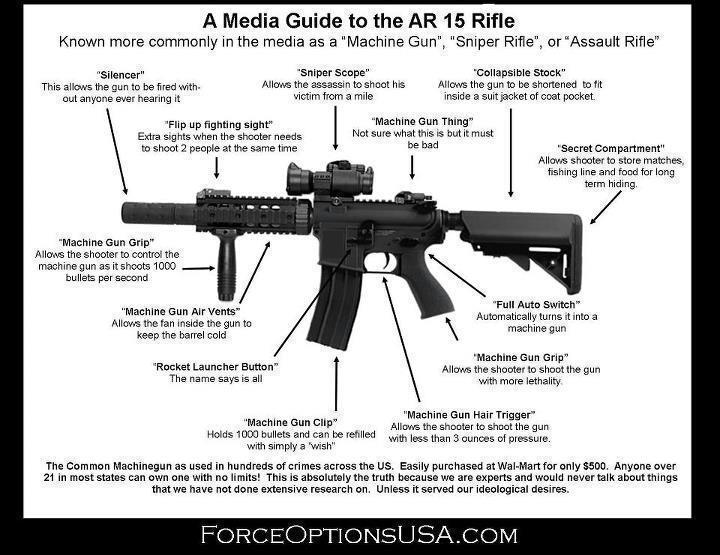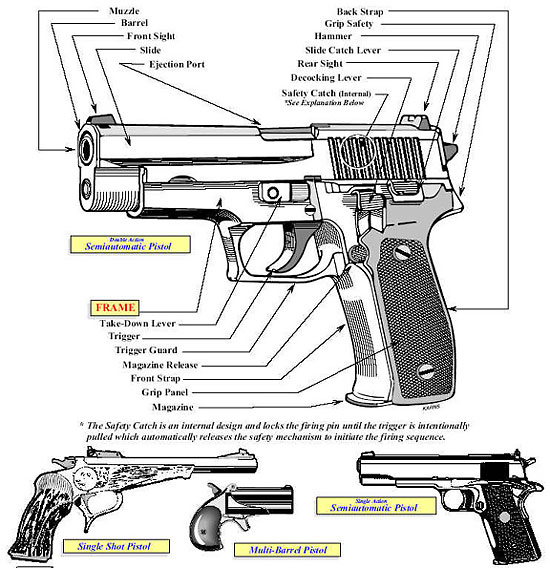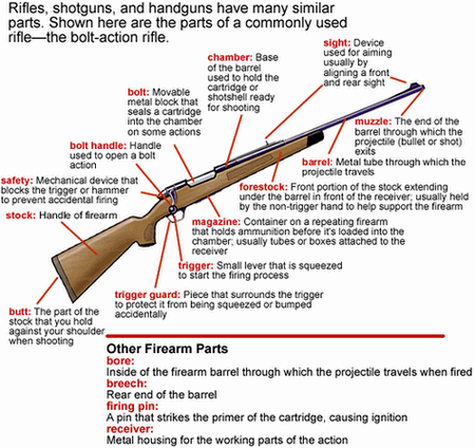C
Cpt Toellner
Guest
III. Combat
Before we get started with this, it's important to dispense some information about the Army, clearing up any confusion.
You have three branches of the Army;
You have three branches of the Army;
- Active Duty, live on army bases around the country and the world, every day job is being in the army. Lots and lots of cleaning every day.
- Army Reserves.
- Army National Guard.
The reason for the different branches is a safeguard against political uprisings;
Active Duty reports to the Executive branch (President).
Reserves report to Congress.
National Guards report to their various states.
Let's say that Trump gets elected in November. President Obama says; "lol fuck that noise," and declares himself president for life, using the Active Duty army to defend his claim. Congress can then raise their Reserve forces to force Obama down. And the States can activate their National Guards to defend themselves or lend in the fight.
Now that that's covered, let's get to army organization.
- The largest unit I will explain is a Brigade, consisting of 2-4 Battalions and a shit-ton of support units.
- Battalions consist of 3-8 Companies, with again, a lot of attached support staff.
- You will typically have an entire company dedicated to support, with truck drivers and such.
- There will also be an HHC, or "headquarters" company, with all the other assets an infantry unit might need such as the medics, the scouts, the motors, and other random occupations.
- A company will consist of anywhere from 70 to 400 guys, consisting of 3-5 Platoons.
- A Company Commander (CO), is the main boss.
- The Executive Officer (XO), is the second in command and in charge of many logistical and administrative ordeals.
- There is also a whole number of non-combat positions within the company like supply and readiness NCOs.
- The First Sergent (FSG) is the senior of all enlisted men, acting as a sort of buffer between the men and the officers. In tactical operations, you will typically see the FSG leading things from the front.
- The radio guy (RTO), follows around the CO, hooking him up with communications and acting as a sort of guard for him.
- The Senior Medic (That's me!) follows around the FSG, setting up medical areas and overseeing the other medics.
- A platoon consists of 20-60 guys, with 3-5 squads.
- The Platoon Leader (PL) is a junior officer in charge of the platoon.
- The Platoon Sargent is the main NCO of the Platoon, leading from the front.
- Each platoon should have support positions like a Medic, Forward Observer, and RTO.
- One squad in each platoon is typically assigned to heavy weapons, or a support role for the others.
- A squad will have 10-4 guys, with an NCO leading, and sometimes split into 2 teams.
Now comes the rank structure of the army.
You can split this into three parts;
Enlisted (The everyday common troop)
Officers (Leaders)
Warrant Officers (a strange hybrid of the two that focuses on specific occupations that I won't be getting into.)
From the bottom up you have the Enlisted.
- Private
- PV2
- Private First Class
- Specialist/Corporal
- Sargent
- Staff Sargent
- Sargent First Class
- First Sargent
- Master Sargent
- Sargent Major
As far as the officers;
- Second Lieutenant
- First Lieutenant
- Captain
- Major
- Lieutenant Colonel
- Colonel
- Brigadier General
- Major General
- Lieutenant General
- General

So that was the easy part!
Next we will be covering the 4 basic sections of modern combat:
- Defense
- Offense
- Urban Combat
- Movement
Defense
This is usually self-explanatory.
What you are looking for is an easily defendable position, one that uses the natural environment to your advantage. If you can find any way to make an enemy take only specific paths to your position, do it. I once attacked a position where the defending company had cut down all the trees with 50 feet of their position, leaving the only lane of attack to be a steep hill, where they shot at us after being exhausted on the climb up.
Here is your average set-up.

Note how all of the important assets are tucked away, behind walls of defenders. You can set up your heavy weaponry like machine guns and motors to cover the largest amount of area or the most open spots.
Every two men pair up and dig a defensive position together, using tarps and ponchos to protect from the rain or sun as needed. Cover is important, but you also need to be able to see out of your spot, don't just pile trees in front of you. In times of combat, a 50-50 sleep schedual is used.
You'll want to set up a path between the positions so that forces from one squad, or the medic, can react and quickly travel to their position of need.
Using barbed wire and trip mines is still commonplace.
Offence
I will cover movement more at a later time, but there are generally two ways you can assault an objective, in columns or lines. The first part of the attack is knowing your area, you generally want to lay your main unit down a few miles from the objective and create a team consisting of the Platoon Leader, RTO, and a few other troops. This is called a "Leader's Recon," and it's just that, the officer scouting the area of attack and setting up a plan.
You never, ever, assault a target blind, without knowing anything.
Upon scouting, you can now make a plan. It's important to have as many assault vectors as possible, that way an enemy can't bottleneck your forces and you can overwhelm their defenses. Keep in mind that you don't want to have too many moving pieces either, as that just means more people to move in sync with each-other and things become confusing really quick. Keep your plans simple.
I'm going to do another awesome graphic to show how an offensive attack should go.

I should be paid for this shit.

Now I have my squads in position.
- First I'll have 1st squad signal the beginning of the attack.
- They will be the last unit I send out, so they should be the last ones to get into position.
- They will set up at the bottom of the hill, wait 10 minutes, then begin.
- They will take opening shots at the defenders, hitting what they can, but the goal is distraction.
- After a few shots they will fade back into the woods, taking the long route around to link up with Weapons Squad.
- Weapons squad will be led personally by the Platoon leader, who will decide when he wants to start the attack proper.
- The main goal of Weapons Squad is to rain hell upon the defenders, opening up with machine guns.
- 2nd and 3rd Squads will provide additional fire.
- As soon as 2nd and 3rd are ready, the platoon Sargent will order them to throw smoke grenades.
- The assault begins.

- As soon as they see the smoke grenades, Weapons and 1st Squad shift their fire to the left, keeping up the fire, but not actually shooting the objective.
- This makes a safe opening for 2nd and 3rd to clear the objective through. You want to secure the outside before you go into any buildings.

- As soon as 2nd and 3rd have cleared the area, they will turn around and provide security while 1st and Weapons advance on the objective.
- Weapons and 1st Squad will then clear the buildings, clear the objective.
- The Medic will wet up a Casualty Collection Point (CCP), for any casualties from the attack.
- There will also be a nearby location for any detainees.
- This position will serve as a sort of rallying point if something goes bad an a retreat needs to be called.
Aaand with that, we are now ready to clear some buildings!
Urban Combat
This is where things get messy. The whole aspect of fighting through a city uses similar tactics as the offence strategy listed above, but now you have buildings, rooms, that need to be cleared.
To do this, you need what's called a "Stack."
- Stacks are anywhere from 2 to 10 men, but the optimal size is 4 guys.
- The Stack will line up against the wall of the building they are about to enter.
- It's important to have security around the building before you jump in, you don't want to run into a room only to find the enemies have gone out a back-door and are now circling around.
- When you line up in a Stack, you line up close, your thigh should be pressed against the butt of the guy in front of you.

- The signal can be anything, a tap on the helmet or thigh are good silent ones.
- As the number 4 man gets the signal, he will run forward, go to the door and breach it.
- This can be done a number of ways, through a battering ram, explosives, or just plain kicking that shit down.
- The number 4 man should be checking the door as well, looking for shadows on the other ends, listening for sounds, and also just checking for any traps.

As soon as the door is clear, the stack runs in, keeping a close to each-other as possible.
- Number 1 man will want to sweep the room as soon as he runs in, bringing his weapon up right away then running in the opposite corner of the room.
- He will call out anything he sees, enemies, important objects, explosives, and the general details of the room.
- Number 2 will want to run forward right after Number 1, doing the same thing and covering anything he doesn't.
- Number 3 is generally the leader of the stack, it's his job to help out the other guys, as well as looking up on the ceiling for anything.
- Number 4 will pivot around, doing rear security and generally sticking to the door.
Movement
Now, there's a lot of places I can go with this, but I'll try to keep things limited to Infantry platoons. If you want to know about convoys and large unit movements, you'll have to look that up.
There are two primary formations a unit can take while moving;
The Line
The Wedge
The line is pretty straightforward, you move single-file, this helps keep everyone together as well as limiting the amount of ground you cover. I.e.: Landmines are less effective. You want your Platoon Sargent in the center along with your medic, your Platoon Leader can go wherever the hell he pleases, but will typically be towards the front.
The wedge is a little more complicated. You want to separate by squad, so we can put the 1st squad in front, a lead man out forward, men on the sides, and the squad leader in the middle behind them. The other squads will follow the same formation, with again the Platoon Sargent and Medic in the center.
You will generally want to keep things spaced out, having guys too close to each other is just asking for them to be taken out by one lucky grenade. Keep things close enough to see, hand signals are going to be your primary form of contact.
And as far as hand signals go; keep things simple. No body will remember a bunch of stupid messages and shit, limit hand signals to only the most basic movements.
On that, I also want to cover the difference between "Halt," and "stop."
Halt is a signal made by holding out your hand, fingers together like a traffic cop. This means that the movement should temporarily pause, members of the unit will pass the signal down the line then take a knee to prevent them being seen.
Stop is a signal made by a balled up fist, this means that you need to stop the movement and get the fuck down. Go prone, find a defensive position, and look for enemies or other signals.
A note on Artillery
Wrapping this all up, I want to cover artillery really quick.
Artillery is usually composed of three parts;
- The forward observer, these are infantrymen, who know how to call in artillery, they will have access to a radio and will inform the FDC with coordinates and information on the target. You want to make sure any and all friendly are away before calling in Artillery.
- The Fire Direction Control (FDC), are a bunch of nerds sitting in an air-conditioned trailer. They receive the coordinates, calculate where the guns need to fire, how much they need to fire, and inform the gun.
- The Gun Line is just that, your line of artillery pieces that receive the information, adjust their guns to sync up with the coordinates, and unleash hell.
- Some guns can be fired as simply as pulling a small lever, I've done this before, it's pretty cool.
- Other guns will be fired with a pull string, you generally want to wrap this around your body once, then twist when firing, this is even cooler than pulling a lever.













